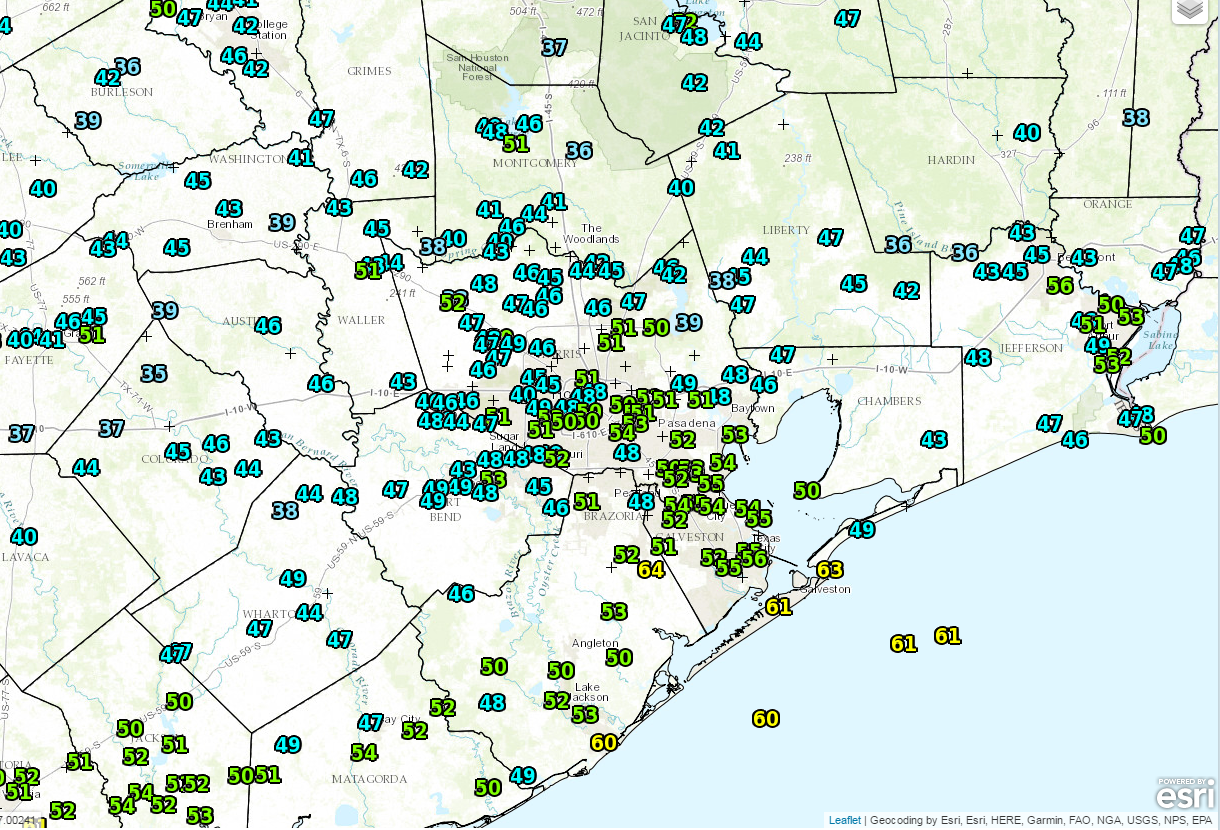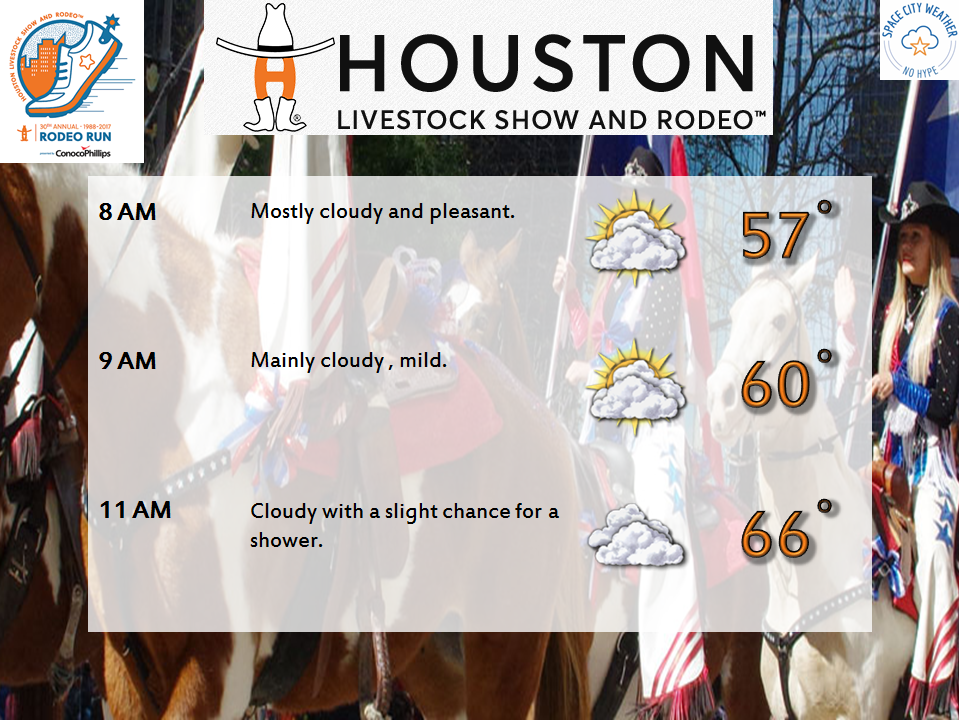It’s another warm morning across Houston, with temperatures generally having fallen only to about 70 degrees. The main concern today will be the possibility of some storms and heavy rain along with the passage of a cold front.
Today
A cold front now in north Texas will move down toward the Houston area, likely pushing through the city during the mid-afternoon hours, and the off the coast by late afternoon. Due to decent moisture levels and and lift associated with the front, much of the area is likely to see some moderate to briefly heavy rain with the front’s passage. I’m expecting on the order of 0.5 inch to 1.0 inch or so, late this morning and during the afternoon hours. The storms may slow, or even stall along the cost, producing more rain there. Along with the front there will likely be some embedded thunderstorms, and a slight chance of some hail. After the front passes tonight look for temperatures to fall into the mid- to upper-50s.

Wednesday
With northerly winds and partly cloudy skies the day will be moderately cooler, with highs in the low 70s. A very slight chance of rain returns during the late afternoon and evening hours. Most of the cooler air is gone by Wednesday night, allowing low temperatures to fall only into the 60s.
(Space City Weather is sponsored this month by an anonymous donor.)


